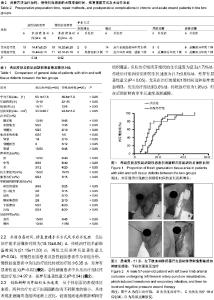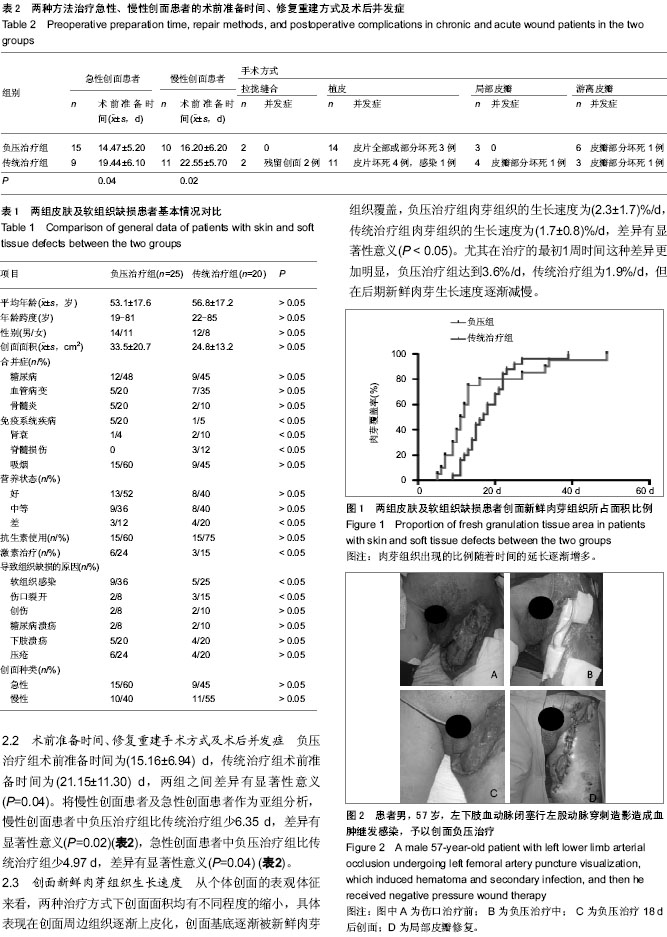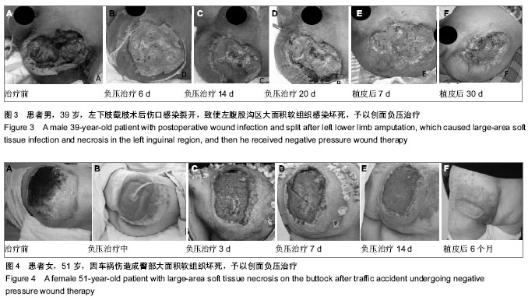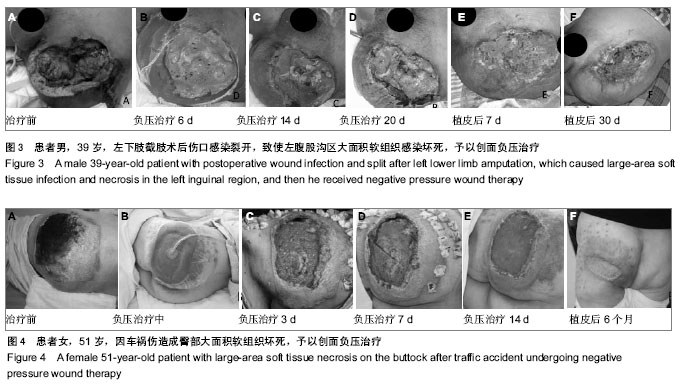| [1] 卢朝阳.应用负压引流护创材料(VSD)治疗四肢复杂创面临床观察[J].吉林医学,2012,33(19): 4145-4146.[2] 张旭辉,刘志勇, 梁达荣,等.应用人工负压技术修复慢性难愈性创面[J].吉林医学,2012,33(12): 2606-2607.[3] 侯力强,李建军,汪立平,等.封闭负压引流技术治疗四肢创伤复杂创面的临床应用研究[J].中国现代医生,2011,49(5):104-105.[4] 刘金超.封闭负压引流技术在慢性创面愈合进程中的作用研究[D].石家庄:河北医科大学2010.[5] Orgill DP, Bayer LR. Update on negative-pressure wound therapy.Plast Reconstr Surg. 2011;127 Suppl 1: 105S-115S.[6] Malmsjö M, Ingemansson R, Martin R,et al.Negative-pressure wound therapy using gauze or open-cell polyurethane foam: similar early effects on pressure transduction and tissue contraction in an experimental porcine wound model.Wound Repair Regen. 2009;17(2):200-205.[7] McNulty AK, Schmidt M, Feeley T,et al. Effects of negative pressure wound therapy on fibroblast viability, chemotactic signaling, and proliferation in a provisional wound (fibrin) matrix.Wound Repair Regen. 2007;15(6):838-846.[8] Lambert KV, Hayes P, McCarthy M.Vacuum assisted closure: a review of development and current applications. Eur J Vasc Endovasc Surg. 2005;29(3):219-226.[9] Campbell PE.Surgical wound case studies with the versatile 1 wound vacuum system for negative pressure wound therapy. J Wound Ostomy Continence Nurs. 2006;33(2):176-185.[10] Gouttefangeas C, Eberle M, Ruck P,et al. Functional T lymphocytes infiltrate implanted polyvinyl alcohol foams during surgical wound closure therapy.Clin Exp Immunol. 2001;124(3):398-405.[11] Sibbald RG, Mahoney J,Therapy Canadian Consensus Group.A consensus report on the use of vacuum-assisted closure in chronic, difficult-to-heal wounds.Ostomy Wound Manage. 2003;49(11):52-66.[12] Clare MP, Fitzgibbons TC, McMullen ST,et al. Experience with the vacuum assisted closure negative pressure technique in the treatment of non-healing diabetic and dysvascular wounds. Foot Ankle Int. 2002;23(10):896-901.[13] Jukema GN, Menon AG, Bernards AT,et al. Amputation-sparing treatment by nature: "surgical" maggots revisited.Clin Infect Dis. 2002;35(12):1566-1571. [14] Gurtner GC, Werner S, Barrandon Y,et al.Wound repair and regeneration.Nature. 2008;453(7193):314-321.[15] Saxena V, Hwang CW, Huang S,et al.Vacuum-assisted closure: microdeformations of wounds and cell proliferation. Plast Reconstr Surg. 2004;114(5):1086-1096.[16] 吕小星,陈绍宗,李学拥,等.封闭负压引流技术对创周组织水肿及血管通透性的影响[J]中国临床康复, 2003,7(8) :1244-1245.[17] Wanner MB, Schwarzl F, Strub B,et al.Vacuum-assisted wound closure for cheaper and more comfortable healing of pressure sores: a prospective study.Scand J Plast Reconstr Surg Hand Surg. 2003;37(1):28-33.[18] Miller Q, Bird E, Bird K,et al.Effect of subatmospheric pressure on the acute healing wound.Curr Surg. 2004; 61(2):205-208.[19] Boulanger K, Lemaire V, Jacquemin D.Vacuum-assisted closure of enterocutaneous fistula.Acta Chir Belg. 2007; 107(6):703-705.[20] DeFranzo AJ, Argenta LC, Marks MW,et al.The use of vacuum-assisted closure therapy for the treatment of lower-extremity wounds with exposed bone.Plast Reconstr Surg. 2001;108(5):1184-1191.[21] Stechmiller JK, Kilpadi DV, Childress B,et al. Effect of Vacuum-Assisted Closure Therapy on the expression of cytokines and proteases in wound fluid of adults with pressure ulcers.Wound Repair Regen. 2006;14(3):371-374.[22] Gouttefangeas C, Eberle M, Ruck P,et al. Functional T lymphocytes infiltrate implanted polyvinyl alcohol foams during surgical wound closure therapy.Clin Exp Immunol. 2001;124(3):398-405.[23] Song DH, Wu LC, Lohman RF,et al. Vacuum assisted closure for the treatment of sternal wounds: the bridge between débridement and definitive closure.Plast Reconstr Surg. 2003;111(1):92-97.[24] Bowler PG.The 10(5) bacterial growth guideline: reassessing its clinical relevance in wound healing.Ostomy Wound Manage. 2003;49(1):44-53.[25] Thomson PD, Smith DJ Jr. What is infection?Am J Surg. 1994; 167(1A):7S-10S.[26] Isago T, Nozaki M, Kikuchi Y,et al. Negative-pressure dressings in the treatment of pressure ulcers.J Dermatol. 2003; 30(4):299-305.[27] Weed T, Ratliff C, Drake DB.Quantifying bacterial bioburden during negative pressure wound therapy: does the wound VAC enhance bacterial clearance. Ann Plast Surg. 2004; 52(3):276-279.[28] Fackler ML.Vacuum-assisted closure of the abdomen.J Am Coll Surg. 2008;206(2):400.[29] Weed T, Ratliff C, Drake DB.Quantifying bacterial bioburden during negative pressure wound therapy: does the wound VAC enhance bacterial clearance.Ann Plast Surg. 2004; 52(3):276-279.[30] Morykwas MJ, Faler BJ, Pearce DJ,et al. Effects of varying levels of subatmospheric pressure on the rate of granulation tissue formation in experimental wounds in swine.Ann Plast Surg. 2001;47(5):547-551.[31] Kaufman MW, Pahl DW.Vacuum-assisted closure therapy: wound care and nursing implications. Dermatol Nurs. 2003; 15(4):317-320.[32] Bee TK, Croce MA, Magnotti LJ,et al.Temporary abdominal closure techniques: a prospective randomized trial comparing polyglactin 910 mesh and vacuum-assisted closure.J Trauma. 2008;65(2):337-342.[33] Gummert JF, Barten MJ, Hans C,et al. Mediastinitis and cardiac surgery--an updated risk factor analysis in 10,373 consecutive adult patients.Thorac Cardiovasc Surg. 2002; 50(2):87-91.[34] Luckraz H, Murphy F, Bryant S,et al.Vacuum-assisted closure as a treatment modality for infections after cardiac surgery.J Thorac Cardiovasc Surg. 2003;125(2):301-305.[35] Tautenhahn J, Bürger T, Lippert H.The present state of vacuum sealing.Chirurg. 2004;75(5):492-497.[36] Mouës CM, van den Bemd GJ, Meerding WJ,et al. An economic evaluation of the use of TNP on full-thickness wounds.J Wound Care. 2005;14(5):224-227. |



